The Sapodilla Project 1993-2009, Guyana, South America
Sapodilla is a fruit that grows on a tropical tree in Central and South America. It is brown, about the size of a large plum and tastes a bit like a mouthful of soft, brown sugar. We had one such tree growing in the middle of our garden in our farm in Hopetown, West Coast Berbice. It seemed to encapsulate the essence of tropical natural goodness, organic purity and all good things, since every year without fail it would bear baskets-full of the delicious fruit. What better name to take for our new eco-tourist resort that we would be setting up to try to develop this corner of South America where my husband had been born? The Sapodilla Brand began, then with a seed of an idea. Edwin (Joe) Joseph, descended from slaves on a colonial plantation, had come back to his birth village to take up the land his ancestors had once possessed and turn it into a thriving business. It would be a new type of farm, an organic farm that was also a tourist resort for overseas athletes and other visitors to stay and savour the natural bounty of a beautiful tropical location with guaranteed warmth, sunshine and healthy organic food. His vision was to have an example of every edible fruit and vegetable he remembered as a boy growing up in this village. He had been taken to England by another Guyanese family in 1950 and forty years later, after a long and successful career, he took early retirement and set off for Hopetown with me at his side. He had promised the elderly parson whose sons had originally taken him to England that one day he would return to help his country. I had just married him and migrated with him to his home country to help him fulfil his promise and realise his dream.
From this:-
To this:
To find out how things panned out for us over the following eighteen years of living in Guyana, trying to implement these lofty aims, you would need to read my book “The ElDorado Affair” ISBN 978-0-9932409-0-4 (via Amazon.co.uk or direct from Sapodilla press) which is as much a historical record as it is a dramatic true story of idealistic intentions coming up against the harsh reality of life. Below are some pictures of the charity we founded and some of the children who benefitted from it:-
Sapodilla Learning Centre all started with a lending library in the large room under our house that had been intended to be a small conference room for business guests. Schools I had taught at in England and especially in Dubai had donated boxes of books they no longer needed so that we could help the children of Hopetown to learn to read and improve the educational resources at the disposal of local schools. Edwin had collected lots of books himself from friends and teachers he knew in England. He had seen the deprivation in schools in the country when he travelled to Guyana in 1984 for his father’s funeral. He could not believe it when he saw that schools had no books because the Burnham government had seen existing books as colonial propaganda, so had them all systematically burned. The teachers all asked Edwin to send them books from England. We had been told by villagers that we should keep the books and run the library ourselves if we wanted to see them being used by the poorest village inhabitants who had most need of them. We therefore had some shelves put up and I began a small lending library so local children could take books home. It was free, so I ran it myself because we had no money to pay staff.
The library soon became a classroom for English lessons as parents started asking for help for their children. I did this free of charge because I knew that local wages were barely sufficient to feed and clothe a family and provide a roof over their head. Demand was so great that I devised a junior integrated English and humanities course suited to mixed-ability teaching at three different age levels. I used the modern teaching methods that I was trained and experienced in using but with no money, I improvised the resources from free materials I found all around us. I hoped to be copied in this by local teachers in all the local state schools but sadly this did not happen. Children in our first classes sat on rickety home-made wooden stools and used car tyres on the mud-floor of our unfinished library. It started off like this:-
And over the years became like this:
A crisis in the local education system in 1995 precipitated my step to set up a free charity secondary school under my house to support local children in their public school leavers’ exams. Rejected for funding agency help by corrupt local officials, I managed the curriculum of six examination subjects on my own but in successive years attempted to expand the curriculum to cover other subjects with the help of a volunteer from England. Friends in England raised funds and found a gap year student for us. We were later able to set up a small science laboratory next to our classroom and include science and maths as subjects.
An experiment being conducted in the laboratory by Sapodilla students
Over the years we led the way in local exam results and sports achievements. Edwin had built up a sports club, winning national and international competitions in athletics and once the full time school came into existence, he merged the club with our school so that all our students got a rounded education with sport as a compulsory daily activity along with his athletes from other schools in the area. These activities covered all sports since Edwin was already an internationally qualified coach in most sports before we migrated.
The sports activities took place in our garden..……
long jump high jump
Edwin teaching a basketball lesson
Jelani a sixth former leading a warm-up session
…under our house…..
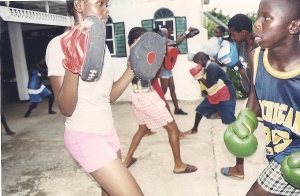 …in the street outside our gate….
…in the street outside our gate….
Edwin organising a hurdles race in the street using hurdles we had originally shipped with us from England when we migrated there in 1991
…….. in the gym under our living room
Tasia, an older student leading keep fit session. table-tennis in the gym
….. …..and even in the pasture at the end of our garden……
….but the pasture was not a flat surface and this was made worse by the daily trampling of cows, goats and sheep belonging to the local community especially in the wet seasons even though we owned that part of the land where the athletes are pictured above. We could not afford to fence it to keep the animals off the grass. It also flooded regularly as it lay below sea-level and even if we fenced it, we could not afford to bring in enough topsoil to raise the surface above the flood level. Because we had the equipment and Edwin’s expertise, the local schools of the region always came to us for their regional school athletics competitions and Edwin taught our students to be officials. He also ran free courses to educate the sports teachers in all the region’s schools with the aim that they would eventually be able to do the job themselves and pass on the skills they learned at Sapodilla to the children at their own schools. He tried to show them how to use the funds they raised at the school sports to invest in better equipment for their own schools so that they would not need to keep coming back to borrow our equipment and sports ground, but this part of his plan never happened. They found it easier to come back to us year after year
…… Eventually we decided to improve our facilities so that we could do sports activities all year round even in the rainy season, so we did what local fund-raising we could ourselves in order to fence off our own sports ground and raise its surface above the flood level. We finally did this with the help of friends and anonymous private English benefactors. We also won the Pan Commonwealth Youth Project Award for 2001 and that helped too.
Under supervision, our students learned the building skills they would need to fence off the field with concrete and mesh.
We paid a local builder, Brian, as a contractor to plan and build the fence with our students as unpaid labourers for their project.
….British High Commissioner Steven Hiscock and his wife Dee opened our Sports Ground in 2005, as he helped to fund the flights of Roz and Susanna, the two British Community Sports Leaders Association officials (also pictured above) to come and validate Sapodilla Learning Centre as an overseas centre for the delivery of their UK certificated course.
Here is a regional schools football tournament being played out on the Sapodilla Learning Centre Sports Ground. Edwin’s sports leaders are officiating and the local community is spectating through the mesh fence.
I set up a mini-company project to help our students learn to run a business through their own practical experience. Students sold shares to their families and people in the local community so they had a small amount of start-up capital. We began with selling my tourism postcards like this:-
and they started making gifts and crafts and cards from the recycled paper we made ourselves,
but local demand for these items was small so we began to produce food because there would always be a local demand for that… so as I now also taught them agriculture, we gave them the opportunity to run our farm for their own profit as part of their practical experience. Each full time student had their own farm vegetable plot which they grew crops and sold them for the mini-company who paid them wages out of the profits
….and we built a chicken pen from those profits which enabled the students to rear chickens for meat…
They also made copra to sell to the local factory for making cooking oil…
…from the profits and wages they thus earned they were able to pay for their own entrance fees for the public examinations.
I set up a small school museum of local history which the students learned from and shared their knowledge with visitors by acting as in-role tour guides for the public on open days like emancipation day as shown here….
We started an African Dance group and our students learned slave dances handed down through their descendants and performed them to groups of visitors….
I taught them drama in the course of normal lessons so we could put on shows for parents …
…and wrote plays for them to re-enact their own history to local audiences under our house…..
Alister Hughes as Governor Van HoogenHeim and Kesha Aaron as Planter Berkey in “Berbician Thunder,”about the Berbice Slave Revolt of 1763
…we eventually went on to perform these plays in the capital at the Umana Yana and The National Culture Centre.
From the earliest days of the school, I taught them how to play musical instruments such as recorder and keyboard so they could make music as well as sing their songs.
Then Edwin helped to make our dramas more musical by playing his drums and writing songs that fitted my script.
We took them on geography field trips into the jungle interior and to interact with children in remote Amerindian villages
We did field work on the local beaches, sugar estates, farms and factories….
….and camping in the local savannas…..
They learned about food and nutrition and did their practicals in the kitchen of our home at first…
… but we needed more space and much later managed to raise the funds to add a separate home economics block housed in two port-a-kabins bought at a bargain price from the German company Dywidag who had just completed their bridge building contract in the country…
…and had them fitted out as kitchens inside….
So all the students could do practicals at the same time….
…and pass their food and nutrition practical examinations…
They also learned first aid and did Red Cross courses with Edwin in our gym…
…some of them learned French as a second language with the help of our language lab donated by Joan De Roy at Luton University.
….we used our television and video player to show them educational videos in lessons……
…..We merged with the local small farmers association and gained the assets they had been given by the Canadian government. This included a pickup truck which needed repair so Dave Hayes and the Poole Runners raised funds for us to get it roadworthy and have seats installed and a cover over the back to take our athletes to sports competitions more easily…..
…The Lions Club of Newquay raised funds for us to buy these cookers and fridges for our home economics centre and for the last few years, Treviglas College sent us 6th form work experience students to help out for two weeks at the end of their summer term…..
The Treviglas connection came from Edwin organising the West of England Schoolboys Under-15 Cricket team to come to Guyana on their West Indies tour and to play in Berbice and visit Sapodilla…
…..Froebel College, Roehampton Institute London helped us get a gap year science teacher, Louise, to start up our science course in 1997…
and they donated a large number of their old computers in 2001 which Mitch Mason of the Poole Runners shipped out to us…..
Mitch Mason, pictured with Dave Hayes above, comes from a cutting printed in Mitch’s newsletter “Sapodilla Today” which he used to canvas support for us. Dave Harrington and his band performed free at gigs in Dave Hayes garage in order to raise funds from Poole Runners and friends…
We also had gap year volunteers Caroline Byron and Pippa Johnson doing their gold Duke of Edinburgh Award service component and Lori Deneke from the US Peace Corps for one year
Rob Willoughby came out for a gap year after his A levels at the time we were a unit in the newly begun Guyanese version of the International Duke of Edinburgh Award known locally as the President’s Youth Award Republic of Guyana, as Edwin was the National Training Officer.
Back row: left to right: Edwin Joseph, Rob Willoughby, Lance, PYARG Ministry official, Clavis, Mitch Mason on a visit from UK, Robin. Front row: Julian, Jessica, Jarrel, Alexis, Dave Clarke (In charge of Caribbean International D of E Award), Leandra, Leroy, Sharon
Students who passed through Sapodilla got top exam grades in local and some even passed International GCE O and A levels. Two students went on scholarships to do degrees at Havanna University, Cuba and came back to tell our students about it……..,
…Others went on to become teachers locally and some trained at the University of Guyana and Cyril Potter College of Education…. Our top three students went on to become officers in the Guyana Defence Force….
….. and one of them was a girl……. Kesha Aaron.

This is just a small part of what we did as a Learning Centre. So much more is to be seen on my Facebook page “Sapodilla Learning Centre 1993-2009” and my “Jane Joseph author” page on Facebook but it all came at a human cost and to read how we did it and what drama unfolded in the course of our eighteen years in Guyana, you really need to read my book “The ElDorado Affair.”

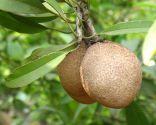
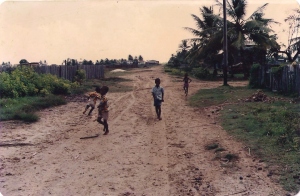


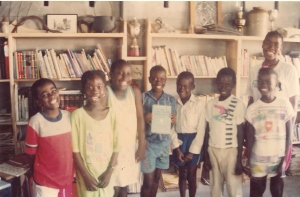
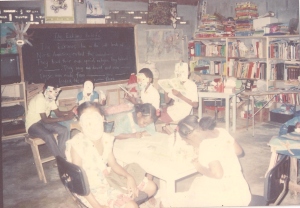

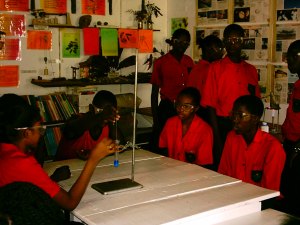


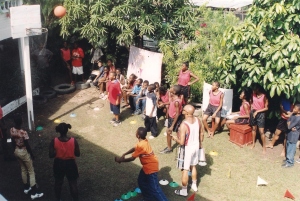
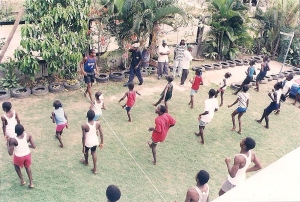









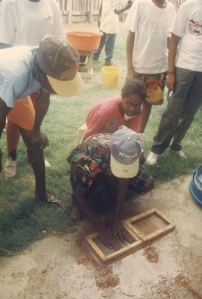


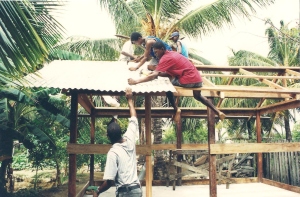


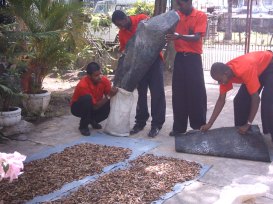



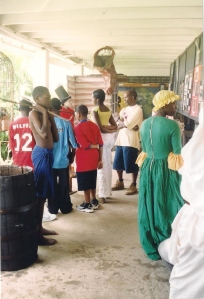









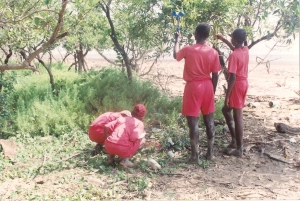

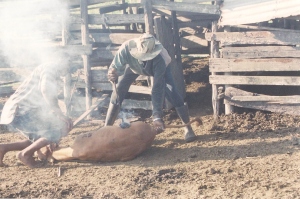







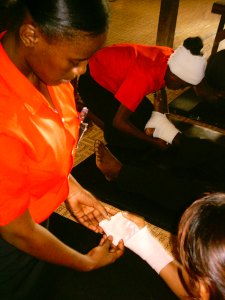




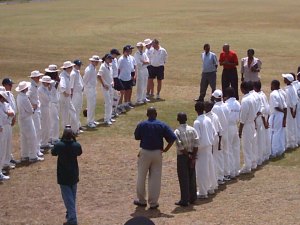
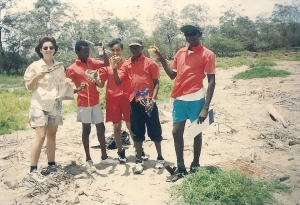



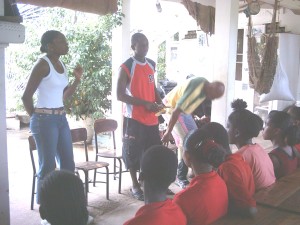
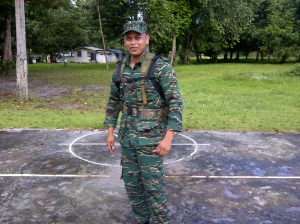
Reblogged this on sapodilla press.
LikeLike
I’m very please to read this history or sapodilla project, it was a very good project for the people of Hopetown and out the village, Mr & Ms. Joseph you all make a very positive role model in these kids lives which I’m so proud of some of them wish it would have continue but everything has an ending. The people of Hopetown miss you all.
LikeLike
I’m glad to get your views Valerie. We miss the people of Hopetown too. Did any of your family attend Sapodilla Learning Centre between 1993 and 2009? If so what was their name then?
LikeLike
blockquote, div.yahoo_quoted { margin-left: 0 !important; border-left:1px #715FFA solid !important; padding-left:1ex !important; background-color:white !important; } Yes they are lots of my families were going there actually Hopetown is made up of families, my niece is Tasia Allen and my cousin Marla Semple.
VEdwards
LikeLike
Hi Val. How are you? Yes of course Tasia did very well at Sapodilla and so did many of the Semples also. You can find pictures of them all on the facebook page “Sapodilla Learning Centre 1993-2009”
LikeLike
blockquote, div.yahoo_quoted { margin-left: 0 !important; border-left:1px #715FFA solid !important; padding-left:1ex !important; background-color:white !important; } ‘Jane this is Tasia @ her school and her@ university of Guyana  where she graduated this year.
VEdwards
LikeLike
Val, I am so glad to hear that Tasia has graduated from UG. Congratulations from us to her. I am sure she is teaching her students well. Unfortunately I cannot see any pictures it looks like you tried to include in your message. If you send them to me by email as an attachment I will be able to see them and share them on the “Sapodilla Learning Centre 1993-2009” Facebook page.
LikeLike
My brother was a part of this project and excelled at his CXC Examination. Thanks to the Joseph’s accepting him for week ends and after school classes. Many thanks.
LikeLike
Hi Monique. Thanks for your contribution. What was your brother’s name? I’m glad to know he did well.
LikeLike
This is very nostalgic for me,,,, I am indeed a grateful student of Sapodilla Learning Centre,,,, I am constantly speaking about my many experiences,, this was a school with standards beyond the imaginations of even our dear parents that send us to the school,,, we were a family, thankyou for Jane and Edwin Joseph for loving other people’s children so much
LikeLike
Hello Kesha. I know you will always hold a place in your heart for Sapodilla and for us as we do for you.It’s lovely to know you have at last found this site and page which you can see at the end mentions your name as one of our highest achievers. If you have any photo that you would like me to include on this page, you will have to send it to me separately as an email attachment as this site will not allow anyone else except me to post pictures on it.
LikeLike
I live next to this school and wasn’t of age yet at time to attend but .. it was a rich educational program with various activities in sports, Drama, Culture, Agriculture, Intigrated Sicience you name t it was available.. it was TURLEY an asset to the community ….
LikeLike
Nice to hear from you Corey. Thanks for your comment. Do you have any family members who we might remember who attended the school?
LikeLike
Aunti Jane the contributions of yourself and Mr. Joseph will forever be remembered by all of us. It really did helped our children to become a positive role modle where ever they went. I talked of Mr. Joseph always and the contribution he made in the Local Government Sector. Thanks again for everything.
LikeLike
Hi Renai, lovely to hear from you and thanks for your contribution here. What are you doing these days? Still at the village office?
LikeLike
Yes I am still at the village Office after 22 years. I am also serving as a member of the Regional Tender and Administration Board.
LikeLike
Edwin says he remembers the day he appointed you to work in the village office. It was a good decision and he is very pleased to hear that you are still there and doing so well. Keep it up.
LikeLike
Hello Aunti Jane this is stacia I have a new email. I am in London and would like to make contact
LikeLike
This was a much needed trip down memory lane. I am absolutely grateful for this school and how it changed my life. I am positive that the life lessons are a big part of the reason i am a succesful adult. I hope to one day return and give back to my community as you are Uncle Edwin did. Thank you.
LikeLike
It is so lovely to hear from you after such a long time Sharonda, and thank you for your comment. We are very glad that you are enjoying success and hope you will get the chance to give back in some way to whichever community you find yourself in. What are you doing now and where?
LikeLike